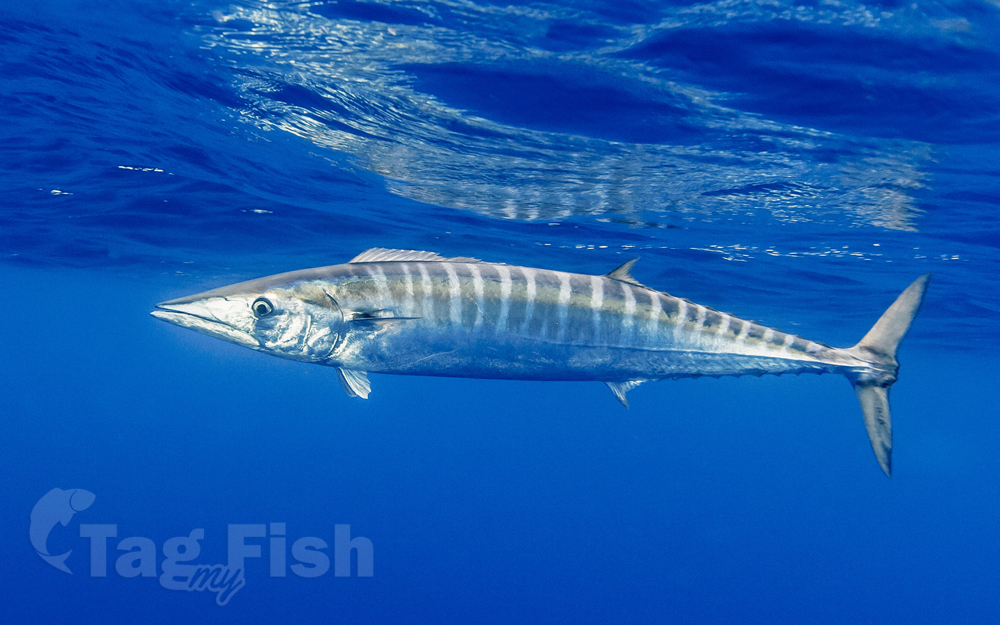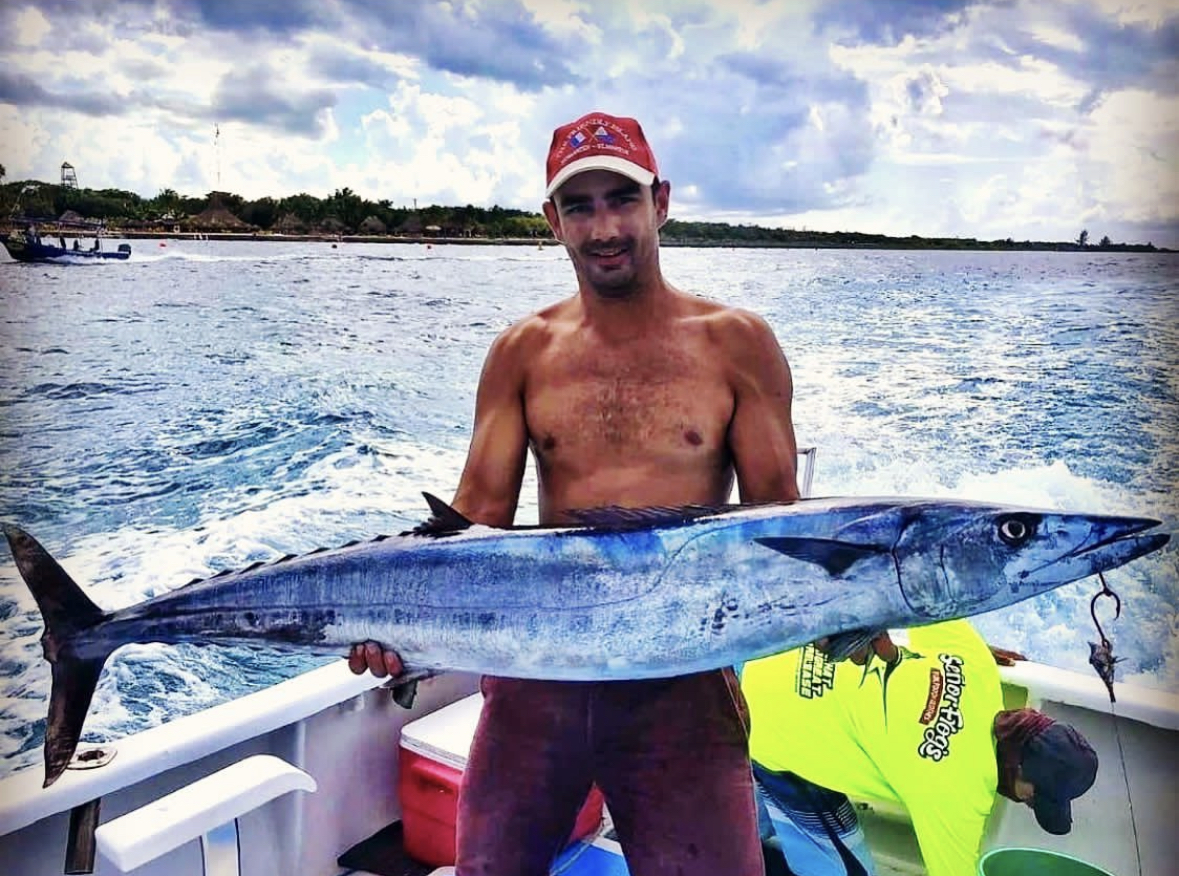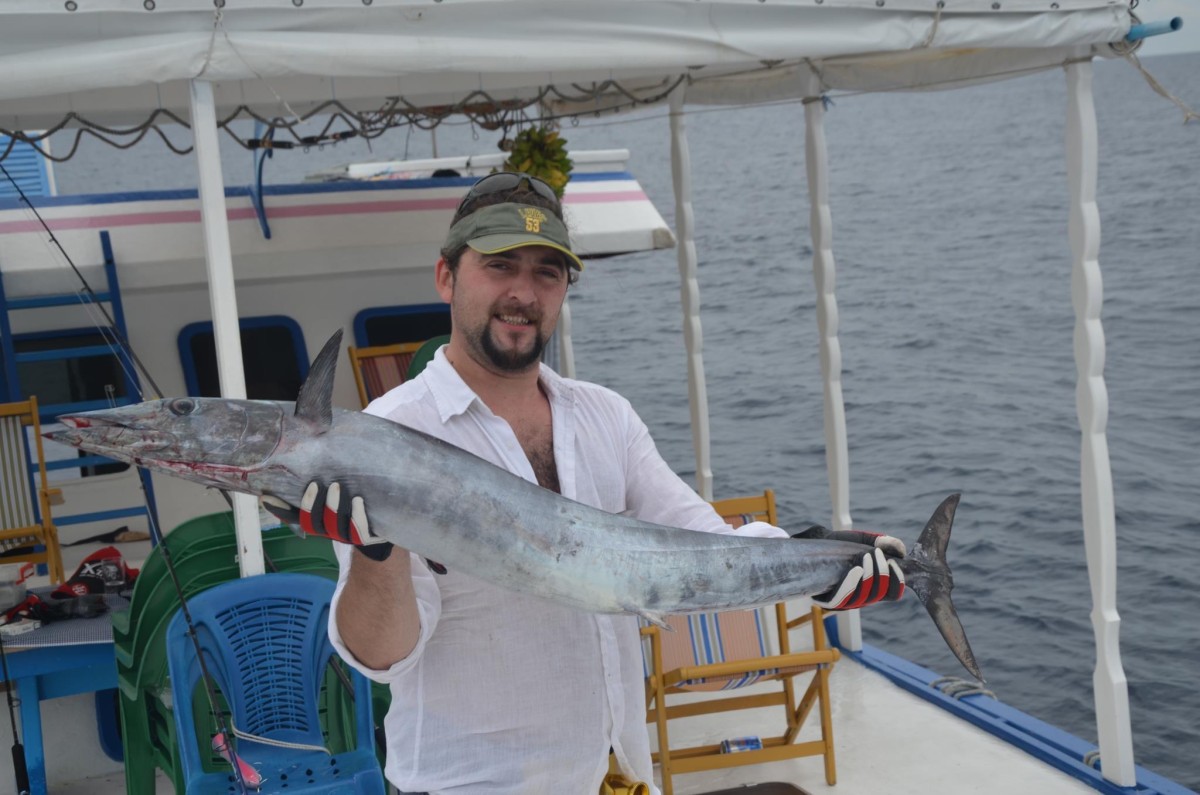Wahoo
(Acanthocybium solandri)

Classification
General data
Wahoo (Acanthocybium solandri) is a scombrid fish found worldwide in tropical and subtropical seas. It is best known to sports fishermen, as its speed and high-quality flesh makes it a prized and valued game fish. In Hawaii, the wahoo is known as ono. The species is sometimes called hoo in the United States.
Distribution
Wahoo has a circumtropical distribution and is found in the Atlantic, Pacific, and Indian oceans. Population genomic research using RAD sequencing indicates that there are two weakly differentiated fish stocks in the Atlantic and Indo-Pacific oceans, likely with a considerable degree of migration and gene flow between these populations.
Description
Its body is elongated and covered with small, scarcely visible scales; the back is an iridescent blue, while the sides are silvery with a pattern of irregular vertical blue bars. These colors fade rapidly during death. The mouth is large, and the teeth of the wahoo are razor sharp. Both the upper and lower jaws have a somewhat sharper appearance than those of king or Spanish mackerel. Specimens have been recorded at up to 2.5 m (8 ft 2 in) in length, and weighing up to 83 kg (183 lb).[3][7] Growth can be rapid. They are among the fastest fish in the sea.
The wahoo may be distinguished from the related Atlantic king mackerel and from the Indo-Pacific narrow-barred Spanish mackerel by a fold of skin that covers the mandible when its mouth is closed. In contrast, the mandible of the king mackerel is always visible as is also in the case of the smaller Spanish mackerel and Cero mackerel. The teeth of the wahoo are similar to those of king mackerel but shorter and more closely set together.
The barracuda is sometimes confused with the mackerel and wahoo, but it is easy to distinguish from the latter two species. Barracuda have prominent scales, larger, dagger-like teeth, and lack the caudal keels and blade-like (forked) tail characteristic of the scombrids.













